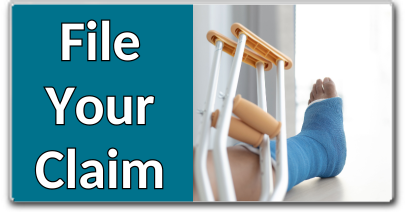Workers Compensation Board of Prince Edward Island
The construction industry is crucial to infrastructure development in PEI, and the WCB is committed to making sure that workers and employers in the industry are safe at work. Workers in construction face many hazards in their workplace ranging from a risk of falling from heights to working around harmful chemicals, gases and biological agents. Other than these industry specific hazards, workers can face more common ones such as slips, trips and falls, working in extreme temperatures, noise and more.
Learn more about workplace safety in construction:
When workers are exposed to asbestos, they can develop asbestos-related diseases such as asbestosis, lung cancer, and pleural or peritoneal mesothelioma.
Employers, contractors and owners all have responsibilities to make sure that exposure to asbestos is prevented and asbestos management is undertaken using proper safety procedures.
Exposure must be reduced to the lowest practical level and cannot exceed the established threshold limit values. Take all necessary measures including using engineering controls, work practices and hygiene practices.
Learn more about managing asbestos and limiting exposure:
Guides Fact Sheet:
To determine if you are at risk of occupational hearing loss, please consider these factors:
If the source of noise cannot be eliminated or controlled, hearing protection is the last line of defense. When noise levels are greater than 85 decibels (dbs), which is the noise level of welding machine, workers must wear hearing protection to prevent gradual hearing loss. In comparison, the average speaking voice is 50-70dbs.
Learn more about noise and preventing occupational hearing loss:
Guides: Fact Sheets:
Any person, working at a height of three meters or more, is required to have a fall protection system in place. This includes when working on scaffolding, on elevated work platforms, on roofs or when there is a fall hazard.
There are two types of fall protection systems: the travel restraint system and fall arrest system. Both require wearing a full body harness.
Learn more about safe procedures while working at heights:
Legislation: Guides:
Guides:
Construction
The construction industry is crucial to infrastructure development in PEI, and the WCB is committed to making sure that workers and employers in the industry are safe at work. Workers in construction face many hazards in their workplace ranging from a risk of falling from heights to working around harmful chemicals, gases and biological agents. Other than these industry specific hazards, workers can face more common ones such as slips, trips and falls, working in extreme temperatures, noise and more.
Learn more about workplace safety in construction:
Asbestos
Asbestos is the common name given to six naturally occurring minerals made up of heat-resistant fibres. These fibres are split into thinner fibres, and at its finest, it can barely be seen under a microscope. In comparison, a strand of human hair is 300 times thicker than an asbestos fibre. These fibres tend to settle very slowly in the air and can be easily inhaled.When workers are exposed to asbestos, they can develop asbestos-related diseases such as asbestosis, lung cancer, and pleural or peritoneal mesothelioma.
Employers, contractors and owners all have responsibilities to make sure that exposure to asbestos is prevented and asbestos management is undertaken using proper safety procedures.
Exposure must be reduced to the lowest practical level and cannot exceed the established threshold limit values. Take all necessary measures including using engineering controls, work practices and hygiene practices.
Learn more about managing asbestos and limiting exposure:
Guides Fact Sheet:
- Fact Sheet - There is always time to stop, test and plan
- Preventing Asbestos Exposure Prevention Update
- Asbestos Safety (WorkSafeBC)
Noise
Noise is a very serious and common hazard in many workplaces. If you are exposed to too much noise at work, even for a short period of time, you are at risk of occupational hearing loss. Noise damages nerves in the inner ears that cannot be repaired. The damage done is permanent.To determine if you are at risk of occupational hearing loss, please consider these factors:
- Do you need to speak in a very loud noise to be understood? If so, you are being exposed to too much noise.
- Do you experience a ringing noise at the end of your workday? If so, you are being exposed to too much noise.
- Does music or speech sound muffled after work but fairly clear the next day? If so, you are being exposed to noise levels that can cause permanent damage.
If the source of noise cannot be eliminated or controlled, hearing protection is the last line of defense. When noise levels are greater than 85 decibels (dbs), which is the noise level of welding machine, workers must wear hearing protection to prevent gradual hearing loss. In comparison, the average speaking voice is 50-70dbs.
Learn more about noise and preventing occupational hearing loss:
Guides: Fact Sheets:
- Construction Safety Campaign - Safety Talks - Noise
- Fact Sheet - Hearing Loss (Workers and Employers)
- Fact Sheet – Hearing Loss (Information for Providers)
Working at Heights
Falls from heights are a significant cause of work-related injuries on PEI and they can happen in a split-second. Serious injury or even death can occur when the required safe work practices for working at heights are not followed, or when workers become complacent while working at heights.Any person, working at a height of three meters or more, is required to have a fall protection system in place. This includes when working on scaffolding, on elevated work platforms, on roofs or when there is a fall hazard.
There are two types of fall protection systems: the travel restraint system and fall arrest system. Both require wearing a full body harness.
- The travel restraint system prevents a worker from getting too close to an unprotected edge which prevents the worker from falling.
- The fall arrest system prevents a falling worker from hitting the ground and preventing serious injury.
Learn more about safe procedures while working at heights:
Legislation: Guides:
- Fall Protection - OHS App
- Ladders - OHS App
- Scaffolding - OHS App
- Guide to Fall Protection Regulations
- Guide to Workplace Safety for Roof Truss Installation
- Fact Sheet - There is always time for fall protection equipment
- Construction Safety Campaign - Safety Talks - Falls
- Construction Safety Campaign - Safety Talks - Ladders
- Preventing Head Injuries Prevention Update
- Roof Truss Collapse Hazard Alert
- Scissor Lift Hazard Alert
- Scaffolding Safety Talk
- Step Ladder Prevention Update
- Zero Tolerance for Fall Protection Violations
- Construction Safety Campaign - Harness Poster
- Construction Safety Campaign - Ladder Poster
- Poster - Don't become the worst-case scenario when working at heights
- Working At Heights Poster - Scissor Lift
- Working From Heights Poster - Harness
- Working At Heights Poster - Ladder
Guides:
- Electricity – OHS App
- Excavation and Trenching- OHS App
- Occupational Carcinogens- OHS App
- Traffic Control- OHS App
- Working in Heat and Cold – OHS App
- Guide to Workplace Safety for Construction Sites
- Guide for Control Zones for Flat Roofing
- Developing A Respirator Program
- Blind Spots Hazard Alert
- Carbon Monoxide Hazard Alert
- Construction Safety Campaign- Safety Talks- Internal Responsibility System
- Elevated Work Platform Tip Over Hazard Alert
- Emergency Eyewash Stations and Shower Equipment
- Equipment Maintenance Hazard Alert
- Excavation and Trenching Hazard Alert
- Fact Sheet - There is always time for safe trenching preparation
- Fire Retardant Clothing Requirements for Welders and Cutters
- Heat Stress Prevention Update
- Histoplasmosis Prevention Update
- Power Take Off (PTO) Hazard Alert
- Seat Belt Hazard Alert
- Solar Radiation (Sun Exposure) Prevention Update
- Snow-blower Hazard Alert
- Towing Hazard Alert
- Use of Lasers in Construction Prevention Update
- Welding Hazard Alert
- Asbestos Safety (WorkSafeBC)
- Histoplasmosis- CCOHS
- Histoplasmosis - Protecting Workers At Risk
- Temporary Workplace Traffic Control Manual 2016
- Working Around Bird And Bat Droppings







